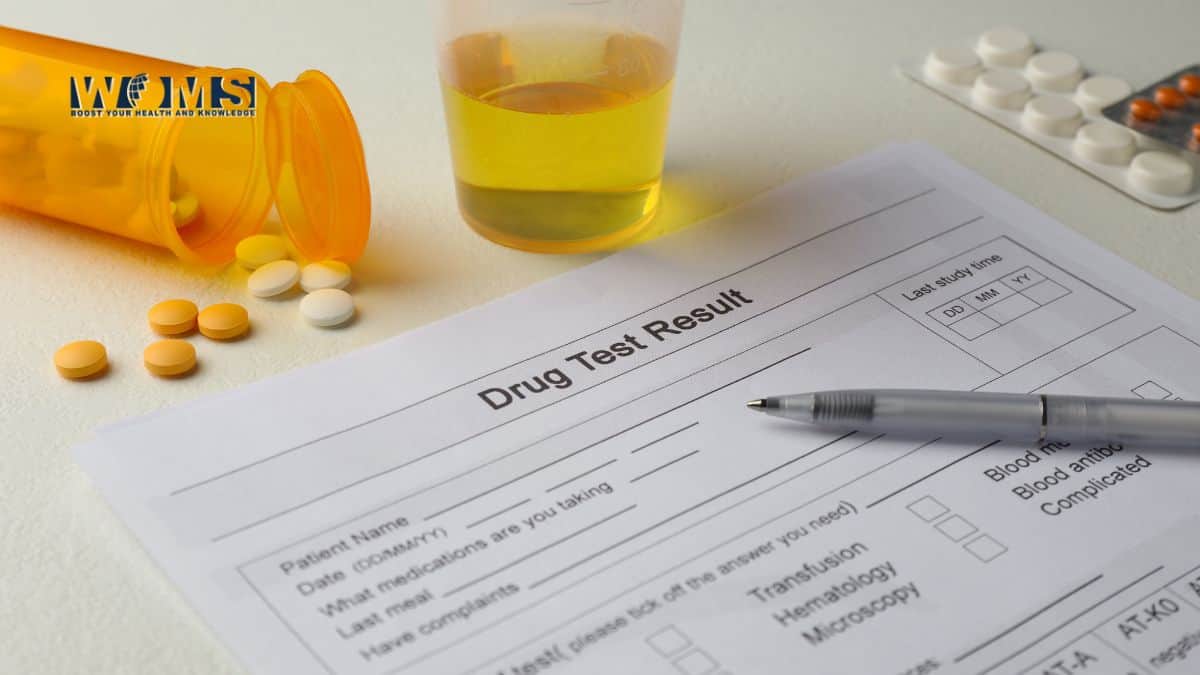Surgeons Under Scrutiny: The Rise of Drug Testing in Healthcare

In recent years, the medical field has seen a significant shift towards ensuring patient safety and trust, leading to a notable rise in drug testing among surgeons. This move, rooted in a desire to maintain high standards of care, reflects a growing concern over the potential impact of substance use on surgical performance.
However, the implementation of drug testing policies in the medical profession sparks a complex debate. While some view it as a necessary step towards accountability and safety, others argue it’s a practice marred by moral judgments and inconsistency. As we delve into this topic, it’s crucial to understand the multifaceted implications of drug testing for surgeons and the broader medical community.
Key Takeaways
The rise in drug testing among surgeons is driven by a commitment to patient safety and the cultivation of trust within healthcare settings, reflecting the medical community’s prioritization of high standards of care and ethical practice.
While drug testing is embraced by many as a necessary measure for accountability and safety, it also raises debates concerning privacy, autonomy, and the potential for discrimination, highlighting the need for a balanced and fair implementation strategy.
The increasing prevalence of drug testing in healthcare is partly due to regulatory requirements and compliance with standards set by state and federal authorities, aiming to uphold healthcare integrity and safety.
Urine Drug Testing (UDT) remains the predominant method for screening due to its non-invasiveness and broad detection capabilities, though alternative methods like blood testing and hair testing are utilized based on specific needs and contexts.
The debate around the necessity and implementation of drug testing policies underscores the complex ethical, legal, and practical dimensions of maintaining patient safety while respecting the rights and privacy of medical professionals.
Overview of Drug Testing of Surgeons
In recent years, you’ve likely noticed a growing trend in the healthcare sector where drug testing among surgeons is gaining momentum. This movement isn’t arbitrary; it’s driven by a heightened recognition of the paramount importance of patient safety and the trust placed in those who wield the scalpel. As someone who’s navigated the intricacies of the medical field, understanding the dynamics and rationale behind this trend is crucial.
First off, it’s essential to realize that the pressures and demands of the surgical profession can be overwhelming. The high-stakes environment, combined with long, irregular hours, may contribute to substance use, intentionally or unwittingly affecting a surgeon’s performance. The idea of drug testing is rooted in preempting such eventualities, aiming to ensure that every patient receives care from professionals at their most alert and capable.
Moreover, the public’s perception of safety and reliability in healthcare institutions plays a significant role in this shift. In an era where information is at everyone’s fingertips, hospitals and medical boards are more inclined than ever to demonstrate their commitment to patient well-being and ethical practices. Implementing drug testing policies serves as a tangible action toward this end, promoting transparency and accountability within the ranks.
However, this growing practice is not without its controversies and challenges. Critics argue that such policies may infringe on personal privacy and autonomy, emphasizing the need for a balanced approach that respects the rights of medical professionals while safeguarding patient interests. The debate also touches upon the implications of false positives and the potential for discrimination, underscoring the complexity of uniformly applying drug testing in the medical field.
Given these considerations, it’s apparent that the conversation around drug testing of surgeons is multifaceted, touching upon legal, ethical, and practical dimensions. As the dialogue evolves, so too will the strategies employed to maintain the delicate balance between individual rights and collective safety in healthcare environments.
Reasons for the Increase in Drug Testing
As healthcare environments strive for higher standards, the practice of drug testing among surgeons has seen a significant rise. This initiative is not merely a procedural formality but a vital component aimed at safeguarding patient welfare and adhering to evolving regulatory landscapes. The following sections unfold the rationale behind this uptrend, situating patient safety and regulatory requirements at its core.
Improved Patient Safety
When you’re undergoing surgery, you inherently place a monumental amount of trust in the surgical team’s hands. Recognizing this profound responsibility, healthcare institutions are amplifying their efforts to ensure that every surgeon is in the best possible state to perform their duties. Increased drug testing is a direct response to this commitment. Substance use, no matter how minor it might seem, can impair a surgeon’s cognitive and motor functions, leading to potentially hazardous outcomes. By implementing regular and rigorous drug testing protocols, hospitals aim to preempt any such risks, thereby enhancing patient safety. This measure is not only about detecting substance use but also about dissuading it, creating an environment where patient care remains paramount.
Substance-related complications: The direct correlation between substance use and surgical complications cannot be overlooked. Substances like methamphetamine and cocaine have been specifically identified for their sympathomimetic properties, which can precipitate cardiac complications. Even though narcotics and cannabis don’t always preclude surgery, chronic usage has been associated with increased cardiac morbidity.
Preventive approach: Beyond detecting substance use, drug testing serves as a preventive measure. By establishing a clear stance against substance use, healthcare institutions foster a culture of professionalism and caution. This precautionary step is critical in maintaining not just the physical well-being but also the trust of the patients.
Regulatory Requirements
The landscape of healthcare is perennially under the microscope, evolving with the advancements and challenges that come its way. Regulatory bodies are at the forefront of this evolution, setting standards and guidelines to ensure that healthcare providers adhere to the highest levels of ethical practice and patient care. Drug testing has become an integral part of these regulations, reflecting a broader intent to uphold healthcare integrity and safety.
Compliance with standards: Healthcare providers are now more than ever under the obligation to comply with state and federal regulations, which increasingly mandate drug testing. This compliance isn’t merely about following the rules; it’s about embodying the principles of healthcare excellence and patient safety that these regulations stand for.
Historical precedents and reforms: Historical events and legislative reforms have shaped the current stance on drug testing among surgeons and other healthcare professionals. For instance, the inception of MICRA (Medical Injury Compensation Reform Act) was a pivotal moment in the medical malpractice domain, underlining the importance of regulatory measures in maintaining healthcare standards. Even though MICRA primarily addressed malpractice insurance costs and damages cap, it paved the way for more stringent controls on healthcare practices, including drug testing.
Methods of Drug Testing
In the context of maintaining high standards in healthcare, particularly among surgeons, it’s critical to understand the variety of drug testing methods available. Each method has its own set of advantages and challenges, making it crucial for healthcare facilities and regulatory bodies to select the most appropriate technique based on their specific needs and constraints.
Urine Testing
Urine testing, often referred to as Urine Drug Testing (UDT), stands as the most common method used in drug screening processes, including for surgeons. UDT is favored for its non-invasiveness and ability to detect a wide range of substances. The technique primarily utilizes immunoassay tests for initial screening, flagging substances as either present or absent. For a more thorough analysis, Gas Chromatography-Mass Spectrometry (GC-MS) or High Performance Liquid Chromatography (HPLC) may be employed, offering specific identification of drugs and their metabolites. This level of precision is particularly vital in contexts where accurate identification of prescribed medications or illicit drug use is required.
Blood Testing
Alternatively, blood testing, or more specifically serum testing, provides an accurate assessment of drug levels at the blood-brain barrier, making it useful in forensic contexts for assessing impairment. Despite its precision, blood testing is less favored for routine screenings due to its invasive nature, higher costs, and the complexities involved in sample collection and analysis. Tests measuring drug concentration in the blood offer limited windows of detection and are not suited for rapid screening, constraining their application in continuous monitoring scenarios.
Hair Testing
Hair testing emerges as a method offering the longest window of detection, capable of tracing drug use back up to 90 days or more. This method involves analyzing hair samples for drug metabolites absorbed from the bloodstream into the hair follicles. While it provides a comprehensive overview of an individual’s substance use over time, hair testing falls short in detecting recent drug use, making it less ideal for scenarios that require immediate results. Its application in the medical field, including among surgeons, is typically considered for retrospective assessments rather than for ongoing monitoring.
Each of these drug testing methods brings to the table distinct features that cater to varied requirements in the healthcare sector. Whether ensuring the fitness of surgeons for their critical duties or aligning with legal and regulatory mandates, selecting the appropriate drug testing mechanism is pivotal.
Challenges and Controversies
The rise in drug testing of surgeons is a pivotal step toward safeguarding patient care and upholding the integrity of the medical profession. With the array of testing methods available, from UDT to GC-MS and HPLC, healthcare facilities are better equipped than ever to monitor and ensure their surgeons are performing at their best. However, it’s crucial to approach this sensitive issue with both understanding and rigor. Some physicians have even been caught using fake urine. By carefully selecting the most suitable drug testing method, hospitals can navigate the challenges, respect privacy concerns, and maintain a balance between trust and accountability. Remember, the goal isn’t just to comply with regulations but to foster a culture of safety and excellence in healthcare. Your awareness and support of these efforts make a difference in promoting a healthier future for both practitioners and patients alike.




